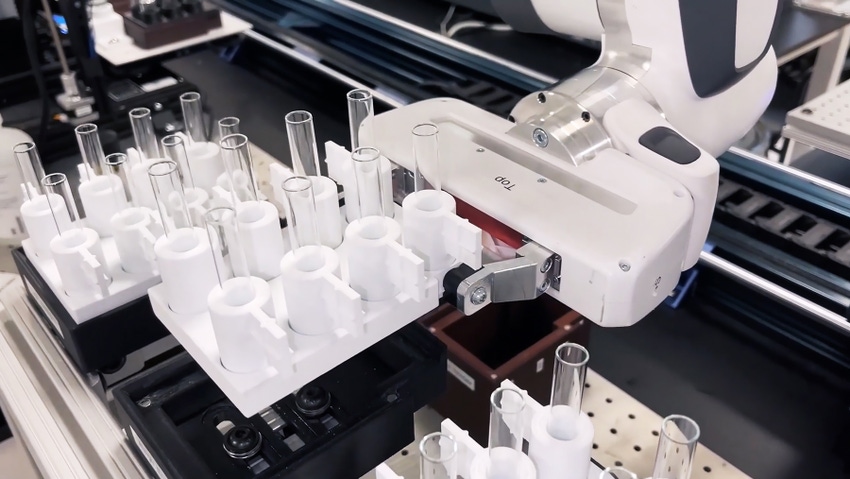New Approach, Automated Lab Streamlines Battery Chemistry Testing
University of Michigan research showcases how automated laboratories expedite chemical testing, enabling transformative battery advancements.

University of Michigan and Samsung's Advanced Materials Lab researchers have pioneered a groundbreaking approach to crafting chemically complex materials, poised to revolutionize battery manufacturing and semiconductor development. Their innovative methodology, detailed in a study published in Nature Synthesis, unveils unconventional recipes utilizing unique ingredients. This breakthrough promises streamlined production processes, reduced impurities, and heightened economic viability.
"Many battery materials boasting superior capacity, charging speed, and stability have been conceptualized but struggled to materialize in the market," stated Wenhao Sun, the Dow Early Career Professor of Materials Science and Engineering at U-M and lead author of the study.
A different approach to materials development
Traditionally, battery materials are synthesized through a sequential reaction of oxide powders, often resulting in undesired impurities due to incomplete reactions. However, the team's novel strategy focuses on creating impurity-free materials reliably by deliberately engineering unstable intermediates that ensure complete reactions.
Jiadong Chen, the study's first author and a doctoral student at U-M, emphasizes the significance of their approach: "By working with two ingredients at a time and intentionally creating unstable intermediates, we can ensure thorough reactions and minimize impurities."

This reaction diagram illustrates how the sequencing of battery ingredients affects material efficiency and purity. For instance, in the synthesis of lithium barium borate (LiBaBO3), mixing boron trioxide (B2O3) and lithium oxide (Li2O) separately first leads to quicker formation of the final product with fewer impurities, compared to conventional mixing methods. Image credit: Jiadong Chen, Wenhao Sun Research Group, University of Michigan.
The research team meticulously designed and tested 224 different recipes, yielding 35 distinct materials relevant to both current and future-generation batteries.
Samsung’s automated lab speeds testing
Collaborating with Samsung's Advanced Materials Lab in Cambridge, MA, the researchers validated their recipes, leveraging the lab's automated capabilities to synthesize and assess material purity efficiently.
Samsung's state-of-the-art automated robotic lab boasts the capability to synthesize a remarkable 24 distinct battery materials within a span of 72 hours. Equipped with robotic arms to precisely handle ingredients and operate laboratory apparatus, the facility ensures meticulous purity assessment of the synthesized materials. Cutting-edge computer systems seamlessly record the outcomes of each experiment, compiling a comprehensive database that empowers researchers to identify optimal recipes for maximum efficacy.
"Our partnership with Samsung's automated robotic lab enabled us to validate our hypotheses across diverse battery chemistries," affirmed Chen.
Results demonstrated that the new recipes, engineered to produce unstable intermediates, consistently yielded purer products, enhancing material purity by up to 80%. Notably, six target materials were exclusively synthesized using these innovative recipes.
Furthermore, the team's blueprint for the robotic lab aims to democratize access to such advanced facilities, fostering accelerated materials development and scientific exploration.
Lab automation advantages
"We advocate for broader adoption of robotic labs to expedite materials development and data collection," asserts Sun. "These labs offer invaluable benefits in throughput, reliability, and data management."
Yan Eric Wang, principal engineer and project manager at Samsung's Advanced Materials Lab, underscored the affordability and long-term advantages of robotic equipment, emphasizing its transformative potential in research and manufacturing.
Funded by the U.S. Department of Energy's Basic Energy Sciences program, this research, detailed in the study titled "Navigating phase diagram complexity to guide robotic inorganic materials synthesis," marks a significant leap forward in advancing battery technologies and beyond.
About the Author(s)
You May Also Like





